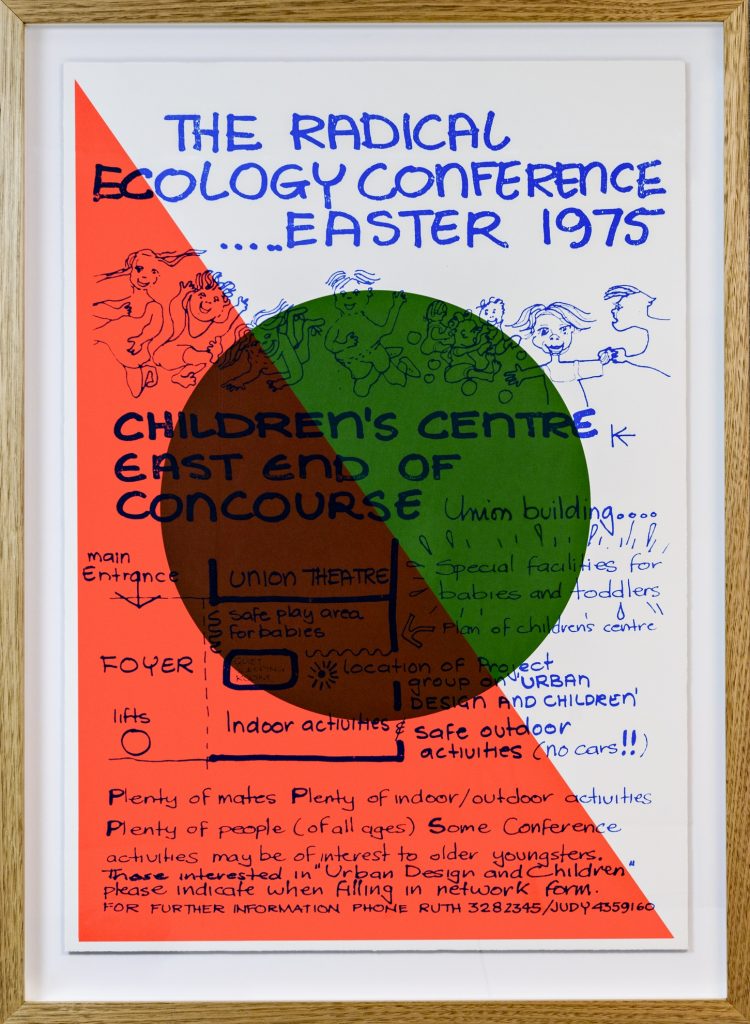THE RADICAL / ECOLOGY CONFERENCE / ....EASTER 1975 / CHILDREN''''''''''''''''''''''''''''''''''''''''''''''''''''''''''''''''''''''''''''''''''''''''''''''''''''''''''''''''''''''''''''''''''''''''''''''''''''''''''''''''''''''''''''''''''''''''''''''''''''''''''''''''''''''''''''''''''''''''''''''''''''''''''''''''''''''''''''''''''''''''''''''''''''''''''''''''''''''''''''''''''''''''''''''''''''''''''''''''''''''''''''''''''''''''''''''''''''''''''''''''''''''''''''''''''''''''''''''''''''''''''''''''''''''''''''''''''''''''''''''''''''''''''''''''''''''''''''''''S CENTRE / EAST END OF / CONCOURSE [extensive text]
Summary
Emily Floyd’s art practice encompasses printmaking, sculpture, installation and public artwork. Perhaps most recognisable are her large, colourful text-based sculptures, which link to her family history of toy-making, and her bold typographical works (she first trained as a graphic designer). Playful and spirited, these works also reveal the comprehensive research, deep consideration and intellectual rigour that Floyd brings to her art-making. Her work engages with feminism, alternative education, community activism, science fiction and leftist politics, and these intellectual touchstones are given shape by the possibilities offered by social history archives, collections and design and art traditions – particularly Bauhaus and Russian constructivism. Always approachable, Floyd’s artworks encourage us to think critically about the world we live in and they stimulate debate on issues that impact on individuals and communities.
The series ‘Ripple’, of which four works are held in the Art and Heritage Collection, exemplify Floyd’s use of archives to drive and shape to her work. During the 1970s and 80s, her mother, Frances, edited a publication titled ‘Ripple’, designed by Mary Featherston. In this period of late second-wave feminism, the serial encouraged community agency and supportive community networks for women, as well as the establishment of childcare cooperatives to help facilitate women’s participation in the workforce. While the personal connection with this publication motivated for Floyd’s reframing of it, so too did feminism’s continuing relevance and the legacy of women’s issues into the 21st century.
The works in Floyd’s ‘Ripple’ series of 36 are varied in their aesthetic, tone and content, though like the original publication they are the result of screen-printing – in this case produced with Trent Walter at Negative Press. In an interview with the Design Files, Floyd says that together they ‘scanned and reprinted pages, but also rebuilt the original graphics that were made by renowned Modernist Mary Featherston. The graphics were then abstracted, rearranged and saturated with colour so that they became something new.’ Numbers 13, 30, 31 and 36, which entered the Art and Heritage Collection in 2014, are unified by their focus on events that inspire collectivism and community agency in addressing issues of public importance. They are also bound by the fact the conferences and demonstrations represented took place in the City of Melbourne suburbs of Parkville, Carlton and North Melbourne, thus giving a view into the city’s possibly forgotten past.
